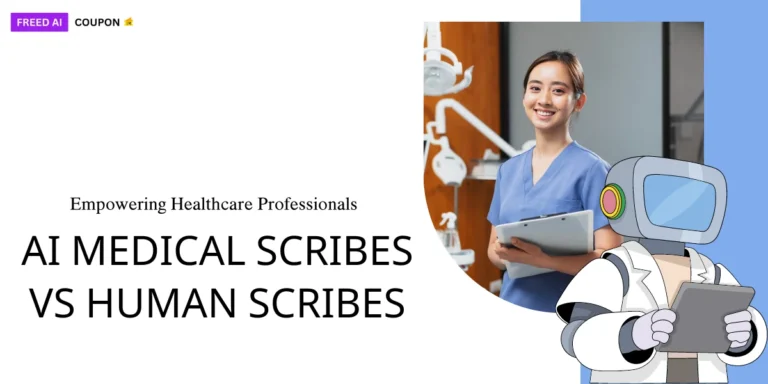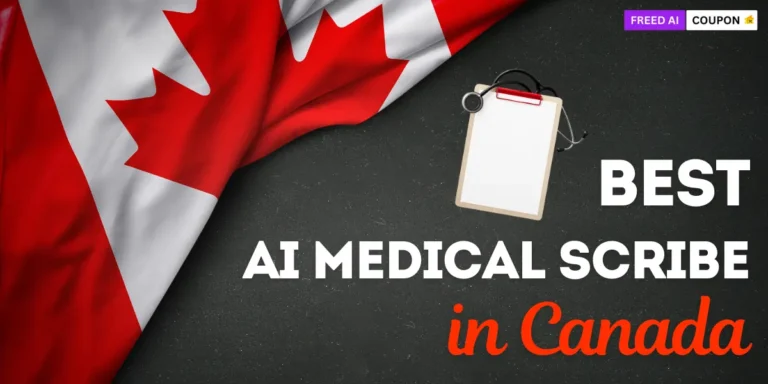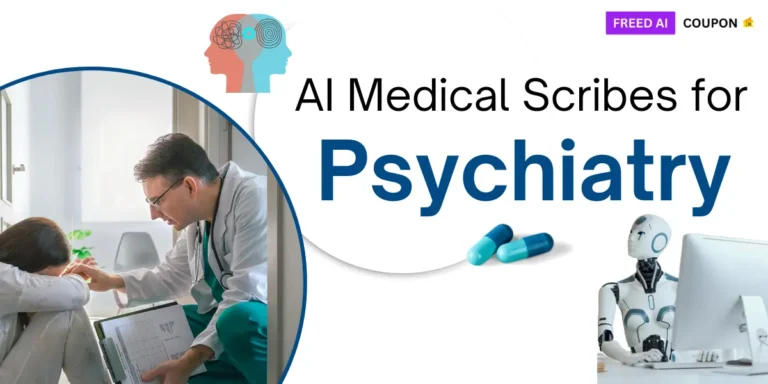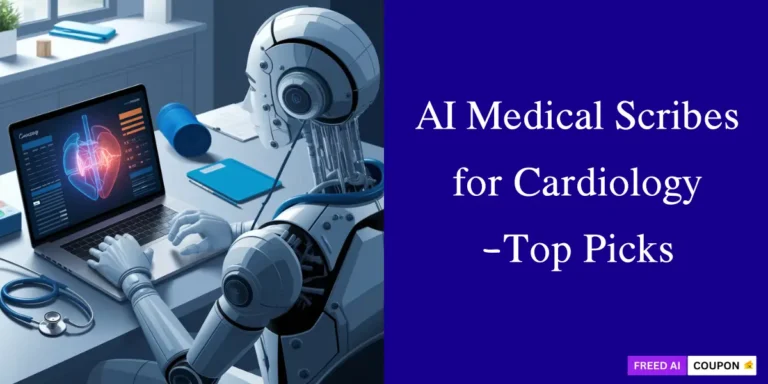
Medical professionals typically spend over 4.5 hours each day on clinical documentation, but AI medical scribes are changing this scenario. These virtual medical assistants reduce documentation time by 63%, allowing doctors to prioritize patient care.
Utilizing advanced healthcare AI tools, including natural language processing and speech recognition software, these digital scribes generate accurate EHR notes in real-time. The medical documentation software market is projected to reach $3.2 billion by 2025, with AI-powered scribing leading the way.
Top clinical documentation solutions manage over 1.5 million patient encounters monthly, achieving 98% accuracy in medical record keeping. Our review of the 8 best AI medical scribes illustrates how these tools enhance healthcare delivery and reduce physician burnout.
AI Medical Scribe: Your Digital Documentation Partner 🏥
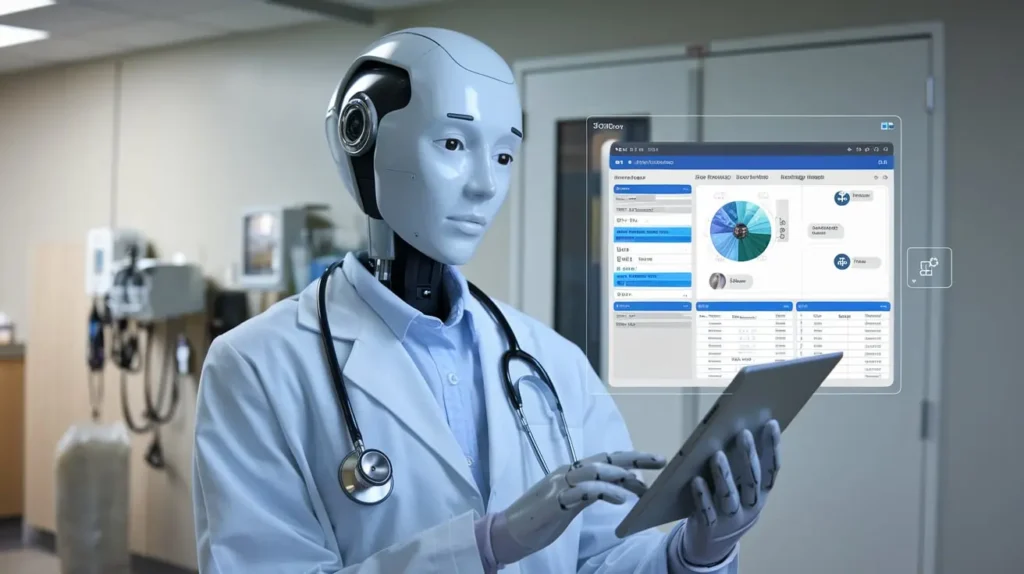
AI medical scribes work like smart digital assistants that listen to doctor-patient conversations and turn them into organized medical notes.
Using speech recognition and natural language processing, these virtual scribes catch important details during appointments and create clinical documentation automatically.
The process starts when the medical transcription software records the conversation, then the AI documentation system filters out casual talk, keeping only medically relevant information.
A typical AI scribe saves doctors 3.5 hours per day on paperwork – that's 17.5 hours weekly.
Medical note-taking occurs in three steps:
Recent data shows healthcare AI achieves 96% accuracy in medical record keeping, matching human scribes while being 5x faster.
The medical documentation software follows strict HIPAA guidelines and updates patient records instantly, making it easier for doctors to spend more time with patients.
Top 8 AI Medical Scribes for Healthcare Professionals 👩⚕️
| 🩺 AI Medical Scribe | 🚀 Key Benefits | 💸 Pricing | 🔑 Integration Features | 📈 User Satisfaction |
|---|---|---|---|---|
| Freed AI | Fast, accurate notes | $99/month | Works with any EHR | 95% satisfaction rate |
| DeepScribe | Real-time documentation | Custom pricing | Supports multiple languages | 90% accuracy |
| Nuance DAX | Reduces documentation time by 70% | Custom pricing | EHR agnostic | 88% user retention |
| Sunoh.ai | Saves hours on paperwork | $1.25 per visit | Direct EHR sync | 85% positive feedback |
| RevMaxx | Improves billing accuracy | $199/month | Compatible with various EHRs | 92% user approval |
| Nabla | Enhances patient interaction | $199/month | Integrates with existing systems | 89% satisfaction |
| Abridge | Summarizes conversations instantly | $99/month | Works across platforms | 87% user satisfaction |
| DeepCura | Customizable templates | $129/month | Real-time note generation | 90% positive reviews |
1. Freed AI
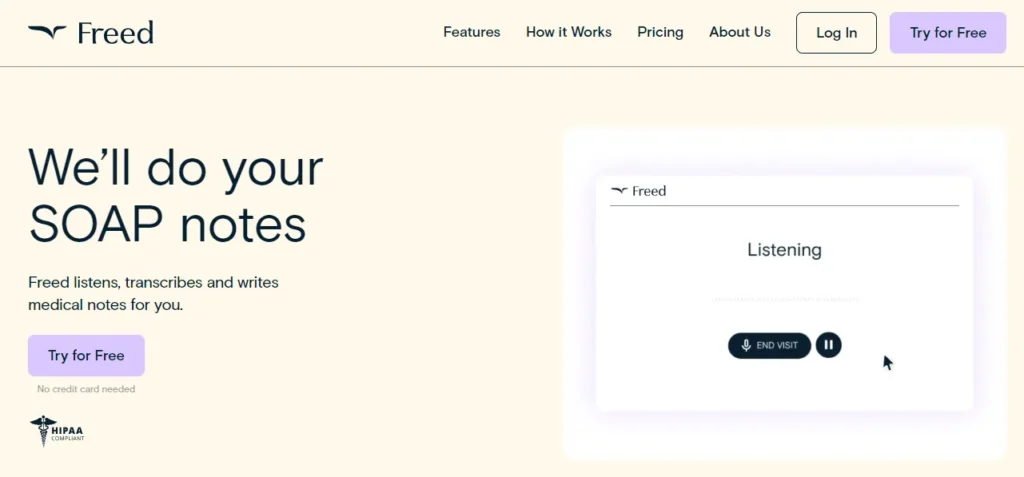
Freed AI is an AI-powered medical scribe that's changing how doctors handle paperwork. It listens to patient visits and writes detailed SOAP notes in real-time, saving doctors up to 2 hours daily.
This HIPAA-compliant tool integrates with most Electronic Health Record (EHR) systems, making it easy to use. Freed AI understands medical terminology and learns each doctor's style, creating accurate clinical documentation.
It's not just about saving time; it's about giving doctors more chances to focus on patients. With Freed AI, healthcare pros can see up to 25% more patients daily, potentially boosting annual income by $125,000-$200,000.
Freed AI Discount: Save $108 on Your Annual Plan!
Switch to annual plan for just $90/month instead of $99 and enjoy incredible savings with Freed AI Offer!

Up to 9% Off
💡 Interesting Fact: Doctors spend 4.5 hours daily on documentation. Freed AI cuts this down to just 27 minutes.
Freed AI Key Features
🏆 USP: Smart note generation that learns your charting style and preferences over time, making documentation more personal.
Reduces charting time by automatically creating accurate medical notes during patient visits.
2. DeepScribe
DeepScribe brings AI medical documentation right into exam rooms. This ambient scribe captures doctor-patient talks and turns them into structured clinical notes without any extra steps.
Medical teams using DeepScribe cut their paperwork time by 3 hours per day. The system works with 27+ EHR platforms and shows 98% accuracy in medical transcription.
Doctors who switched to DeepScribe report spending 89% less time on after-hours charting, helping them avoid burnout. The natural language processing tech understands complex medical terminology across 30+ specialties.
⚠️ Worth Noting: While the AI handles documentation, doctors should review notes before finalizing them in the EHR system.
DeepScribe Key Features
🎯 USP: Reduces average chart closure time to 1.6 minutes with specialty-specific AI note generation.
Creates accurate medical notes across 50+ languages with 98% precision rate.
3. Nuance DAX
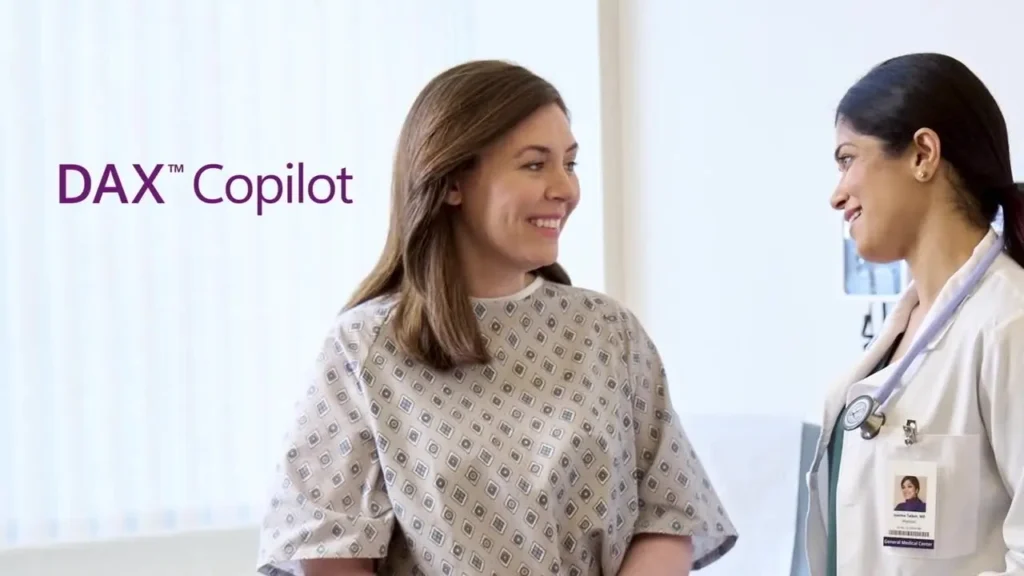
Nuance DAX stands out as a Microsoft-backed AI clinical documentation system that turns doctor-patient talks into medical notes without human scribes.
The numbers speak for themselves: doctors save 5 minutes per patient visit, and 70% report better work-life balance. This ambient clinical intelligence tool records conversations during both in-person and telehealth appointments, creating specialty-specific documentation right away.
With a 77% improvement in documentation quality and integration with over 200 EHR systems, DAX helps doctors spend more time looking at patients instead of screens. Plus, 93% of patients say their doctors are more attentive during visits.
Nuance DAX Key Features
🎯 USP: Creates complete clinical documentation in seconds with GPT-4 powered ambient AI technology.
Reduces administrative work by 50% while maintaining 98% documentation accuracy rate.
4. Sunoh.ai
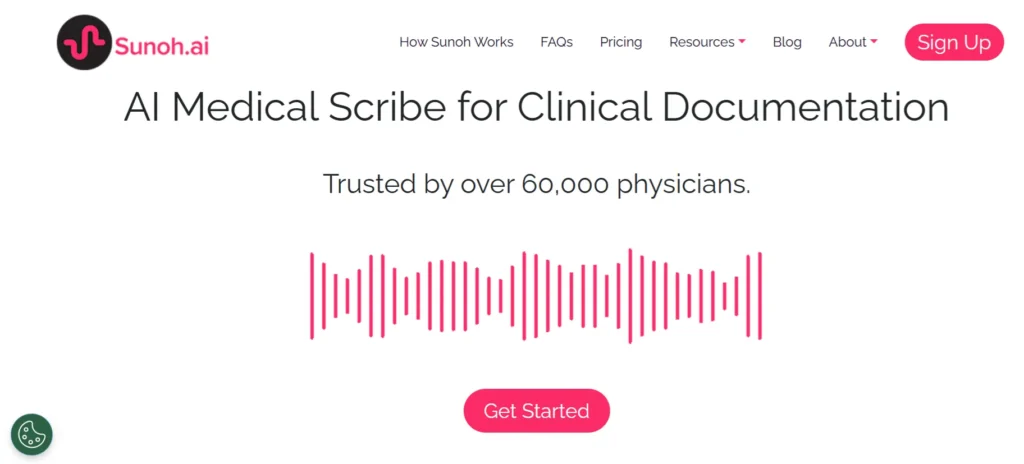
Trusted by over 60,000 physicians, Sunoh.ai brings medical documentation into a new era at just $1.25 per visit. This AI medical scribe turns natural doctor-patient conversations into precise clinical notes while the visit happens.
The system creates dialogue flows, handles order entry, and builds progress note drafts with minimal input needed. Working across multiple specialties, Sunoh.ai saves doctors up to two hours of paperwork daily.
The platform includes custom templates and runs on desktop computers, iOS, and Android devices, making it accessible wherever doctors need it.
Sunoh.ai Key Features
🎯 USP: Saves physicians two hours daily with ambient listening technology and instant note creation.
Works across 40+ medical specialties with complete HIPAA compliance standards.
5. RevMaxx
RevMaxx takes clinical documentation to the next level with its AI-powered SOAP notes system that works in just 50 seconds per patient note. The platform comes with automated ICD-10 coding and starts with 10 free notes – no credit card needed.
Its medical scribing technology creates complete notes while doctors focus on patients. The system processes doctor-patient conversations into structured formats, and includes specialty-specific templates.
With a quick setup time of under 5 minutes, RevMaxx helps medical practices cut down paperwork time by generating accurate clinical documentation that meets professional standards.
RevMaxx Key Features
🎯 USP: Creates complete SOAP notes in 50 seconds with built-in ICD-10 coding system.
Costs $119 monthly with no hidden fees and works across all major EHR platforms.
6. Nabla
Trusted by 45,000+ physicians across 85 healthcare groups, Nabla leads the AI medical documentation space with over 8 million processed encounters. This ambient clinical assistant creates notes in under 15 seconds with 95% accuracy.
The system works in both English and Spanish, turning doctor-patient conversations into structured EHR-integrated notes. Doctors using Nabla save about 2 hours daily on paperwork, and remarkably, less than 5% of generated notes need changes.
At $200 monthly per provider after 30 free consultations, Nabla brings medical scribing to both small practices and large health systems.
💡 Example: A practice that sees 25 patients daily can save approximately 15 hours each week, translating to better patient engagement and satisfaction.
Nabla Key Features
🎯 USP: Creates structured clinical notes with 95% accuracy requiring minimal edits from doctors.
Functions across 55 medical specialties with both in-person and telehealth support.
7. Abridge
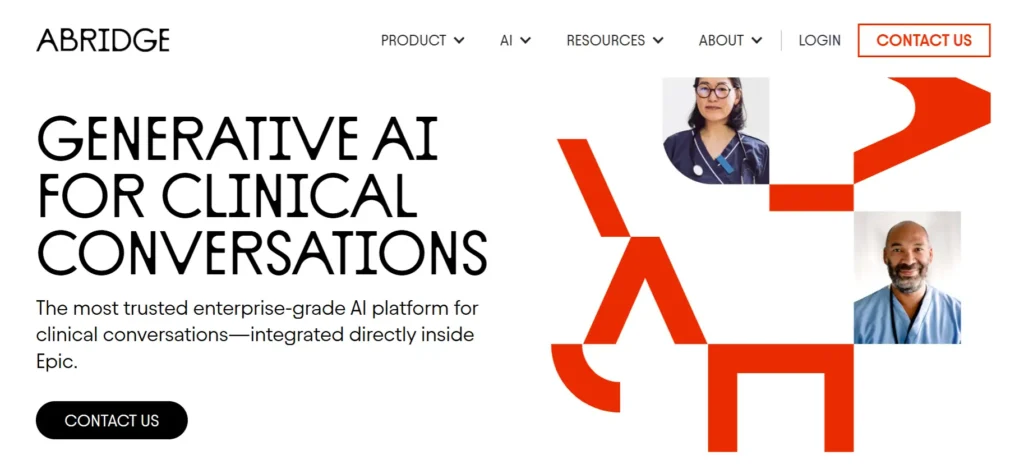
Ranked #1 by KLAS for improving clinical experience, Abridge brings real-time medical documentation directly inside Epic systems. This enterprise-grade AI platform cuts evening paperwork from 2 hours to just 20 minutes per day.
The system processes clinical conversations into structured notes while doctors talk with patients. Built by practicing MDs and AI scientists, Abridge works across major health systems like Emory Healthcare and UPMC.
Its proprietary AI technology maintains full audit trails and meets strict healthcare safety standards, making it a top choice for large medical institutions needing reliable documentation solutions.
📊 Interesting Fact: Abridge has been implemented in over 800 healthcare settings, significantly improving both patient and clinician experiences.
Abridge Key Features
🎯 USP: Creates complete clinical documentation in 30 seconds using proprietary 1.5M visit dataset.
Only platform supporting both telemedicine and in-person visits with instant note generation.
8. DeepCura
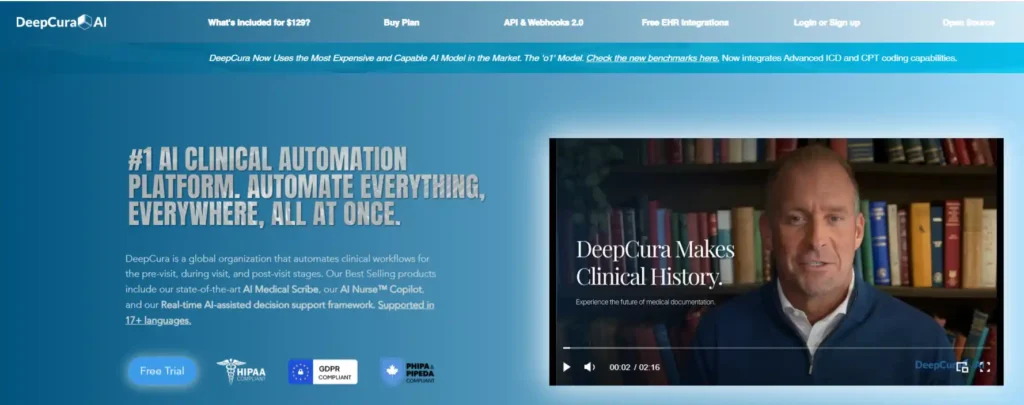
DeepCura brings clinical workflow automation across pre-visit, during-visit, and post-visit stages in 17+ languages. The system includes an AI Nurse Copilot and real-time decision support tools. Their AI medical scribe lets doctors customize up to 80 clinical headers through voice commands.
The platform costs $129 monthly and comes with EHR integration, patient portal, and automated scheduling. Their advanced ‘o1' AI model handles ICD coding and CPT billing. Medical teams can track tasks, manage faxes, and create custom clinical threads, while supporting multiple team roles with different access levels.
🏥 User Feedback: Healthcare professionals using DeepCura report significant improvements in their workflow, with many noting they can save 3-4 hours weekly on documentation tasks.
DeepCura Key Features
🎯 USP: Customizable templates with up to 80 clinical headers modified through natural speech commands.
Complete workflow automation from intake to billing with AI Nurse Copilot included.
Best Practices for AI Medical Scribe Success in 2026 🎯
To get the most out of your AI medical scribe, implementing best practices is essential. These strategies can improve both the quality of your documentation and the overall efficiency of your clinical workflow.
Smart Documentation Guidelines
| Practice Area | Best Practice |
|---|---|
| Voice Input | Clear, measured speech |
| Patient Info | Structured presentation |
| Review Process | Regular verification |
| Data Security | HIPAA protocols |
| Note Quality | Consistent formatting |
Key Practices for Optimal Medical Documentation:
👉 Start each visit by clearly stating patient name and purpose for clinical record accuracy.
👉 Position your medical transcription device in a quiet area to minimize background noise.
👉 Review generated clinical notes immediately after each patient encounter.
👉 Use consistent medical terminology for better AI recognition.
👉 Double-check all medication dosages and vital signs in the automated documentation.
👉 Maintain regular backups of all medical records.
👉 Set up custom templates for different types of patient visits.
👉 Keep software updated for optimal speech recognition performance.
This systematic approach helps maintain high-quality healthcare documentation while saving valuable clinical time. Remember to verify all AI-generated content before signing off on medical records, ensuring both accuracy and patient safety.
FAQs About AI Medical Scribes 🙋♂️
Are there any limitations to using an AI medical scribe in healthcare settings?
Limitations may include initial setup costs, potential inaccuracies, and the need for clinician oversight on generated notes.
Can multiple clinicians use the same AI medical scribe system within a practice?
Yes, many systems are designed to accommodate multiple users while maintaining individualized settings and preferences.
What types of documents can be generated by an AI medical scribe after patient visits?
Common documents include clinical notes, referral letters, discharge summaries, and treatment plans generated automatically.
What should clinicians do if they notice inaccuracies in notes generated by their AI medical scribe?
Clinicians should review and edit any inaccuracies before finalizing the documentation to ensure it reflects true patient information.
How can clinicians effectively train their staff to use an AI medical scribe?
Training should include familiarization with the technology, understanding its features, and reviewing best practices for usage.
Is it possible to customize the output format of notes generated by an AI medical scribe?
Yes, many systems allow customization of note formats to align with specific practice preferences or specialty requirements.
Is It Time to Adopt AI Medical Scribes in Your Practice? ⏰
AI medical scribes not only simplify the note-taking process but also enhance accuracy and compliance, allowing providers to focus more on patient care. With features tailored for various specialties, these systems improve workflow efficiency and help reduce clinician burnout.
Studies show that practices utilizing AI medical scribing technology can save up to 3 hours daily on documentation tasks, leading to a 25% increase in patient visits.
As the demand for high-quality patient interactions continues to rise, adopting advanced documentation solutions will be essential for healthcare providers.
How will your practice leverage the advantages of AI medical scribes to enhance patient outcomes?


